
This resource is a poster of the functions of the 3 branches of government.
- Subject:
- Social Studies
- Material Type:
- Reading
- Provider:
- USA.gov
- Author:
- USA Gov
- Date Added:
- 02/20/2017

This resource is a poster of the functions of the 3 branches of government.

This parent guide supports parents in helping their child at home with the 5th grade Social Studies content.Within the folder you will access Parent Guide PDFs in FIVE Languages: Arabic, English, Hindi, Spanish, and Vietnamese to help on-going communication with caregivers.

This resource accompanies our Rethink 5th Grade Social Studies course. It includes ideas for use, ways to support exceptional children, ways to extend learning, digital resources and tools, tips for supporting English Language Learners and students with visual and hearing impairments. There are also ideas for offline learning.

In this lesson plan, students learn about our 3-branch government and the basic principles of the system of checks and balances.
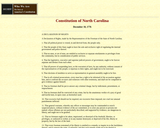
Students can review the original Constitution of North Carolina which was created prior to the American Revolutionary War.
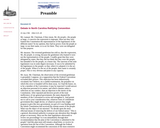
Students can read transcripts from the debate about the raitification of the United States Constitution by people in North Carolina.

These pages allow students to understand the executive branch of government. They will read about constraints and powers of the office of President as well as the departments they oversee.

In this lesson, students learn about the distribution of powers called federalism and explore historical and current issues in the evolution and development of federalism.

In this lesson students learn about the governmental structures and functions of the government of the United States, a constitutional republic. The ability to check each branch by other branches has kept the powers of the government in balance.

In this lesson, students will learn about the understanding the importance of having rules (laws) in society, learning how they are addressed in the U.S Constitution, and gaining an understanding of the Bill of Rights.
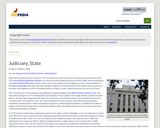
Students will learn about the development of the Judiciary Branch of the State of North Carolina.

These pages expose students to the organization and function of the judicial branch of government.

In this lesson, students demonstrate an understanding of what happens in a real court of law, learn and apply a variety of questioning techniques, and apply effective oral communication skills.

Students will read a description of a conclusion and a passage. Students will then write a conclusion for the passage. This resource supports English language development for English language learners.
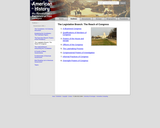
These pages allow students to see the organizational structures and powers of the United States Congress.

In this lesson, students focus on the principles of justice and the role of the judiciary. By following a young girl as she tries to recover her stolen bicycle, the narrative provides a context for understanding the process of resolving a conflict from negotiations to trial. In all the lesson activities, students are gaining practice in examining and discussing issues from different viewpoints before rendering a decision. As an extension activity, student groups can develop and perform their own mock trials based on familiar fairy tales or fables.

In this lesson, students become familiar with the many roles (hats) of the president.

Students can view a mini page insert which addresses the relationship between the Federal and State governments. These were articles created specifically for elementary students and were published in 1987.
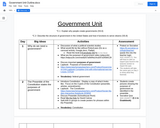
This is a unit based on the MC3 curriculum already created in the state of Michigan. I've taken the unit and added some extra online components and used some materials from Teacherspayteachers.com to create activities to further engage the students.

Students learn about the governmental structures and functions of the government of the United States, a constitutional republic. The ability to check each branch by other branches has kept the powers of the government in balance.